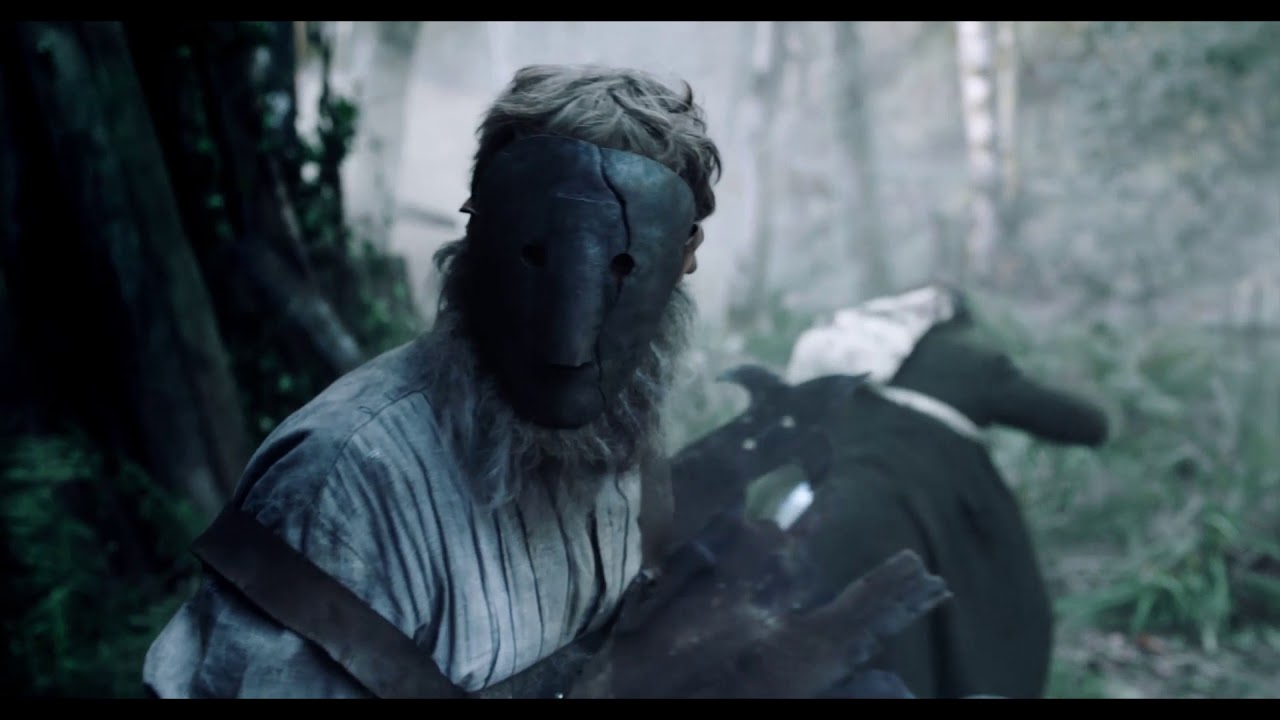Errementari Review (Film, 2018) #31DaysofHorror
Errementari is a retelling of one of the oldest folk tales in the world. “The Smith and the Devil” tells the tale of a blacksmith who makes a deal with the devil. Whatever the deal is, the blacksmith uses his new power to trap the devil and torment him until the deal is broken and the smith regains his control. It could be any number of wishes and even a genie or Death itself, but the arc of the story remains the same.
The blacksmith in this version is described as a man so evil that the devil himself fears him.
Errementari is a period retelling during the First Carlist War in Spain. The smith is a soldier captured by the opposing side in the bloody Civil War. As he is about to be executed, the devil appears in the shadows. Suddenly, the smith not only survives his execution by firing squad, he is able to fight his way through the opposing army to return home. Eight years later, he lives in total isolation in his forge, a figure of myth and source of great fear in his village. A young girl and a government minister alike wind up having to enter the locked up forge to recover what they have lost.
This is a Catholic horror film told from three perspectives: the smith, the girl, and the village. The religious aspect is easily the glue that holds the whole film together. This is a village, rather a whole culture, defined by a fear of the consequences of religious failure. It’s the perfect kind of time period and setting for a tale about a deal with the devil.
The young girl’s perspective is the most interesting. Her version of the story feels like a young girl trying to find her place in a world that has already cast her off. Her mother committed suicide when she was a newborn and no one in the village will let her forget that she is trapped in hell for her sin. At eight years old, she already has no fear of the oppressive religious guilt that defines day to day life in her village. For all the grief she receives on a daily basis, she refuses to back down from her belief that good people have a chance to redeem themselves even if faced with Hell itself.
Most of this story is told from the perspective of this girl, and it’s the perfect combination of awe and open mindedness to sell this deal with the devil.
She becomes the witness to the blacksmith’s constant struggle against a demon. This is where Errementari really shows off its creativity. The overall story is a new take on “The Smith and the Devil,” but the nuances of the story come from all kinds of folklore about the devil and demons. This demon cannot unlock himself from a cage unless someone else puts the key in first. He recoils at the site of a crucifix and is physically harmed by religious iconography. He also cannot stomach the sound of bells and must stop whatever he is doing to count objects, however small, if challenged to by a person. While I’ve seen these individual elements used in this kind of religious horror film before, I’ve never seen a screenplay commit to the idea that every story ever told about demons is true.
The film does have one major flaw and that’s the quality of the special effects makeup. It’s not good. You can see the rough edges on all the prosthetics—a large scar on the girl’s face, all the separate pieces of the demon’s facial prosthetics. Further, there’s a lot of really poor quality hair laying—building up facial hair as a makeup appliance—throughout the film. Not only do you see the seams, some of the actors have crepe hair straight from the package glued to their faces in the artificial coils they come wound in. The hair that is brushed out and laid down is all tangled up and laid on the faces in unnatural growth patterns. The hair work especially is inconsistent from scene to scene.
The makeup is a small flaw in the grand scheme of the film. Errementari tells a classic folktale well with enough new wrinkles and layered elements to make it seem fresh and interesting. It feels like a combination of Pan’s Labyrinth and the Twilight Zone episode “The Howling Man” about the devil trapped in a cage. It’s religious horror that chooses to take its moral backbone from the idea that people should be treated fairly and kindly instead of a strict reading of doctrine. The whole thing is a surprisingly nuanced spin on one of the oldest stories of all time.
Errementari is currently streaming on Netflix. Do yourself a favor and watch with subtitles and the original Basque audio.
Like what you’re reading? Consider supporting Sketchy Details today.






